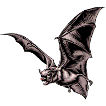Museum, University of Nebraska State

University of Nebraska State Museum: Mammalogy Papers
Document Type
Article
Date of this Version
2-2-1973
Citation
Occasional Papers of the Museum of Texas Tech University (February 2, 1973) 12: 1-14.
Abstract
Since the publication of "Vernacular names of North American mammals north of Mexico" by Hall et al. (1957) and its subsequent revision (Hall, 1965), systematic and other studies have contributed materially to a better understanding of the nomenclature of North American mammals. For this reason, and because of the usefulness, principally to students, of checklists that record both scientific and vernacular names, an updated listing of New World mammalian species north of Mexico is timely. As in the previous lists, a specific vernacular name applies to all populations of that species.
The present checklist includes all species of North American mammals recognized as of the close of 1972 and is based on the relevant published literature. Insofar as practicable, we have avoided personal taxonomic judgments. By way of example, some recent studies reflected in the list include those of Mitchell (1968), who reduced the Odobenidae to subfamilial status under Otariidae, van Zyll de Jong (1972), who separated New World otters from those of the Old World under the generic name Lontra, and Lee et al. (1972), who elevated to specific status Peromyscus attwateri and P. comanche. Ongoing systematic studies will result in future additions and deletions to the list; this is particularly true for the Cetacea, where our provisional arrangement follows closely that proposed by Rice and Scheffer (1968).
Various species of non-native mammals have been introduced into North America over the years--both accidentally, as in the case of Old World murid rodents, or for some purpose, as in the case of ungulates imported as big game. In the present compilation, we have listed nine non-native species (identified by an asterisk) that now occur in the wild state in sufficient numbers to justify inclusion. Other species, the blackbuck (Antilope cervicapra), axis deer (Cervus axis), and sika deer (Cervus nippon), for example, probably now occur in limited numbers outside confinement and no doubt some will be included in subsequent lists. The summary by de Vos et al. (1956) on introduced mammals is a useful reference.


Comments
Copyright 1973, Texas Tech University. Used by permission.